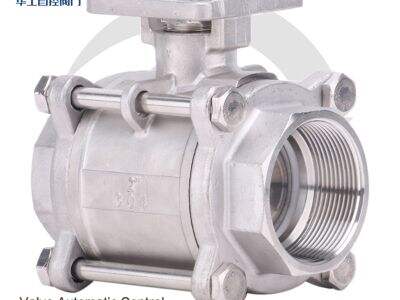Electric valves are crucial to regulating the flow of liquids and gases throughout many systems. Otherwise, you have to install these valves in your fluid control system to ensure everything is in place. How to Install Electric Valves: Step by Step!
Understanding Electric Valves
Before we get to installation, let’s take a closer look at the importance of electric valves. Electric Valves are used to regulate the flow of gases or liquids. They can open and close to allow the fluids to flow or to cut off the flow, as the system requires. This controls the pressure, temperature and quantity of fluid, ensuring the system operates properly.
How to Select an Electric Valve
When it comes to selecting the proper electric valve for water, here are some things to consider:
What Type of Fluid Will be Going Through the Valve, First, ascertain the type of fluid that will be flowing through the valve. Certain valves are for water; others are for oil or gas.
Secondly, the flow capacity of the valve should be taken into consideration. You want a valve that will accommodate the flow your system requires.
How to Wire the Electric Valve
And now you’re going to install the electric valve you picked. Follow these simple steps:
The power is cut for the system to monitor so that you can easily install safely.
Locate the spot in the line where the valve will be installed. Make sure it’s easy to reach.
Fittings Connect the valve to the pipes with appropriate fittings. Make sure it’s all snug so nothing leaks.
Use of brackets or screws to attach the valve to the Patient.
Inspect all the connections to verify everything is connected properly 3?4? Check for Compatibility The Controller can not work with Hybrid system or those so-called? Hidden? controlled systems, and back-emf
Restore the power and check to see if the valve opens and closes properly.
Wiring Electric Valves
If not done properly, wiring could affect performance of the electric valves. Connect the valve to power according to the manufacturer's directions. "Use proper voltage and current to prevent valve damage. After you hook it up, do a quick test on your valve to see if the valve open and closes smoothly. If you continue to have difficulties, revisit your wiring and correct any issues.
Testing Your System
Once you’ve installed the electric valves, it is important to test them. Test to make sure the valves open and close as needed. Observe the flow of fluids to determine if the valves are regulating the flow.Other details:Fluidssoft-sealing valves and The automatic valve’s Boast and automatic directional control valve configurations are used to control the direction of fluid flow in automation. If there is a malfunction, such as leaks or valve not functioning properly, you need to seek about it further. Investigate the wiring, connections, and settings to diagnose the issue.


































